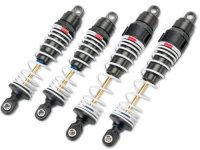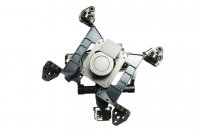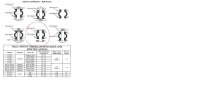Here is another test video. This is an example of a "typical flight". Nice and slow. I flew around the park right next to our house (near downtown Houston TX). I haven't changed any settings yet on the gimbal or Hoverfly controller from my previous test flight(s), and same crappy camera. I took the raw footage and ran it through Sony vegas stabilizer @ 10% to remove the roll bounce I am getting.
This coming week I plan to begin working on my horizon (roll gain) setting in the HFC and dissassembling the gimbal to add additional members for rigidity. I ordered 4 vibration ball mounts to replace the rubber grommets I am using. http://www.barrycontrols.com/products/product.cfm?cid=7&fid=36 I don't think my grommets are really doing anything and I am sure vibrations are making it down to my gimbal which doesn't help my roll bounce issue.
https://dl.dropbox.com/u/91287103/HEX 4.wmv
This coming week I plan to begin working on my horizon (roll gain) setting in the HFC and dissassembling the gimbal to add additional members for rigidity. I ordered 4 vibration ball mounts to replace the rubber grommets I am using. http://www.barrycontrols.com/products/product.cfm?cid=7&fid=36 I don't think my grommets are really doing anything and I am sure vibrations are making it down to my gimbal which doesn't help my roll bounce issue.
https://dl.dropbox.com/u/91287103/HEX 4.wmv




